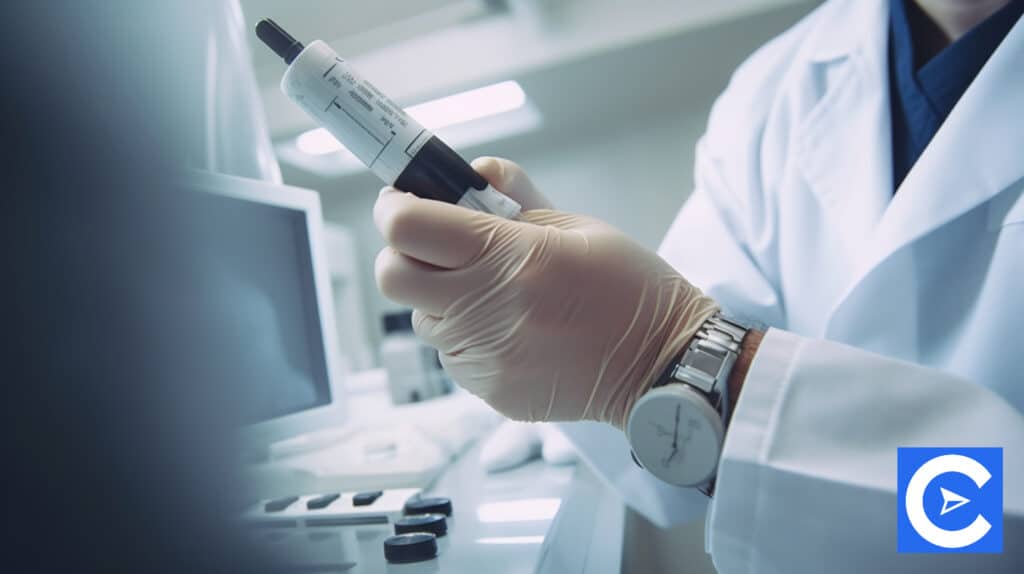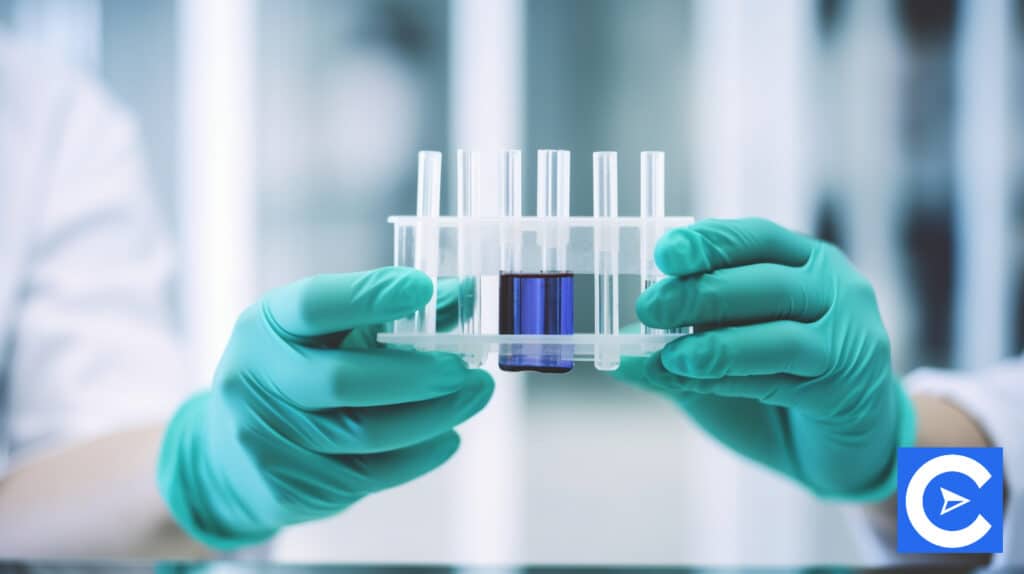Other Free NCLEX PN Study Guides:
There are 8 Modules in NCLEX PN Study Guide. Here you can navigate all the NCLEX PN Study guide modules.
- NCLEX Study Guide Home
- Module 1 | Coordinated Care Of the Patient
- Module 2 | Overall Safety and Control of Infections
- Module 3 | The promotion of health and maintenance
- Module 4 | Integrity in psychosocial functioning
- Module 5 | Providing Basic Care and Ensuring Patient Comfort
- Module 6 | Therapies: Pharmacological and parenteral
- Module 7 | Potential risk reduction
- Module 8.1 | Adapting physiologically
- Module 8.2 | Adapting physiologically
- Module 8.3 | Adapting physiologically
let’s get started right away.
Diagnostics: Cardiovascular

Cardiac enzymes
A patient with a suspected myocardial injury should have his creatine kinase (CK) and creatine kinase-MB levels checked every six to eight hours.
They usually rise within 4-6 hours of injury, and normal ranges are 30 IU/L (CK) and 0-5% (CK-MB) of the CK level.
The levels should peak between 12 and 24 hours after the injury if no further damage has occurred.
It will take three to four days for their levels to return to normal following the event.
The levels of Troponin I and T can be measured after non-cardiac surgery to detect myocardial infarction.
Acute coronary syndrome can also be detected through this method.
A type of protein, Troponin, is found in skeletal and cardiac muscle, and when injured the tissue releases it into the bloodstream.
- Troponin I (< 0.05 ng/ml): This will show in around 2-6 hours. Its peak is at 15-20 hours with a secondary peak at 60-80 hours. Within 5-7 days, it returns to normal
- Troponin T (< 0.2 ng/ml): In 2-6 hours, this will increase following MI. It stays at an elevated level but within 7 days will return to normal
Echocardiography
The non-invasive ultrasound technique of echocardiography is used to assess and diagnose valvular lesions, blood flow, and anatomic heart abnormalities.
It includes:
- Standard 2D echo
- Transesophageal (TEE) prob
- Doppler imaging
- Bubble study
Diagnostics: Endocrine and laboratory tests

Glucose laboratory test
High glucose levels in patients indicate the presence of the diabetes mellitus
Be aware of these glucose levels in order to monitor this condition:
- Normal: 70 – 99 mg/dL126
- Impaired: 100-125 mg/dL
- Diabetic: Above 126 mg/dL
There are a number of conditions that can cause an increase in glucose levels, such as
- Renal failure
- Stress
- Cushing’s syndrome
- Hyperthyroidism
- Disorders of the pancreas
Antibody testing and basic thyroid function testing
Pituitary glands produce thyroid stimulating hormones (TSH).
In order to produce this hormone, the hypothalamus releases thyrotropin releasing hormone (TRH).
The thyroid releases T4 (mostly) and T3 when stimulated by TSH.
When screening for thyroid diseases, free T4 (unbound test) is the best test to assess thyroid function.
A thyroid disease can also be detected using antibodies.
Someone with Graves’ disease, for instance, has thyroglobulin antibodies in around 50% of cases.
The percentage rises to 90% for patients with Hashimoto’s thyroiditis.
Diagnostics: Hematologic

Red blood cells
An estimated 95% of the mass of the biconcave disks comes from red blood cells.
In addition to carrying oxygen through the body, RBCs also contain iron, which binds oxygen to the cells.
There are a number of RBC disorders that can cause anemia, including:
- Blood loss
- Hemolysis
- Bone marrow failure
There will be more information on RBC laboratory tests in your coursework.
They include hemoglobin, hematocrit, mean corpuscular volume (MCV), and reticulocyte count.
White blood cell count
In order to determine the severity of the infection, a leukocyte count or white blood cell count can be performed on a patient.
- 4800 to 10,000 is a normal count
- When a patient has an acute infection, their BAC will be 10,000 or greater, while when they have a severe infection, their BAC will be 30,000 or higher
- A viral infection shows 4,000 and lower
Other types of hematologic diagnostics include C-reactive protein and erythrocyte sedimentation rate as well as coagulation profile elements.
You will find these extensively covered in your coursework
Diagnostics: Gastrointestinal

Studies regarding liver function
These studies include:
- Bilirubin levels
- Total protein
- PT or prothrombin time
- Alkaline phosphatase
- AST (SGOT)
- GGT, GGTP
- ALT (SGPT)
- LDH
- Serum ammonia
- Cholesterol
Check your coursework to see what values you should measure here and what ranges they should be in.
Nutritional lab monitoring
Albumin and total protein
A number of factors can affect total protein levels, including infection and stress.
This is usually measured as part of a patient’s overall nutritional assessment.
Normal values should be in the 6-8 g/dL range.
What is the importance of protein?
Many reasons can be cited, but perhaps the most crucial is that wounds will heal faster if the protein levels are correct.
There is a protein called albumin that is essential for cells and tissues to function.
Patients suffering from renal disease as well as those who are malnourished or who have suffered severe burns will have a lower level of this protein.
Normally, protein levels are determined by determining albumin levels.
- Normal values: 3.5 to 5.5 g/dL
- Severe deficiency: lower than 2.5 g/dL
Transferrin
We make this protein in our livers, and it transports around a third of the iron in our bodies, a nutritional indicator.
A patient’s transferrin levels can be significantly lowered when they don’t consume enough protein, or when they suffer from liver disease or anemia.
It should be noted that measuring transferrin levels alone isn’t sufficient for determining a patient’s nutritional status.
- Normal values: 200-400 mg/dL
- Severe deficiency: less than 100 mg/dL
Diagnostics: Genitourinary

Studies of renal function
Below you will find a list of various renal function tests patients often undergo, including:
- Urinalysis
- Blood urea nitrogen (BUN)
- BUN/creatinine ratio
- Urine creatinine
- Serum creatinine
- Creatinine clearance
- Uric acid
- Osmolality (serum)
- Osmolality (urine)
Check your coursework for further information if you are unsure of their values or purpose.
Urinalysis
The following is a list of urinalysis components as well as normal findings.
- Color: The color should be amber to pale yellow when normal. Urine with a dark color could be a sign of other substances present
- Appearance: Clear, but occasionally cloudy
- Odor: Normally, there is a slight odor. The smell could indicate an increase in bacteria. Odor can change through eating particular foods, like asparagus
- Specific gravity: Normal: 1.005 to 1.025. Protein levels can rise as a result of fever, vomiting, or dehydration
- pH: Normal: 4.5 to 8
- Urobilinogen: 0.1 to 1.0 units
- Glucose, ketones, protein, blood, bilirubin, and nitrate: This will be negative when normal
Radionucleotide renal scans and IVP
Radionucleotide renal scans take anything from 20 minutes to 4 hours.
CT scans are performed after dimercaptosuccinic acid (DMSA) is administered intravenously.
With these scans, you can assess the kidney’s overall function and perfusion.
When hydronephrosis is present, its cause can be determined by detecting lesions, atrophy, and scars via the scan.
Catheterization may be necessary to measure a patient’s urine output and when doing so, ensure they remain well-hydrated.
It is possible to perform an intravenous pyelogram (IVP) in order to look for tumors, and structural defects, and to evaluate urinary structures.
During an IVP, radiographs will be taken every minute for five minutes.
An additional radiograph is taken after 15 minutes to allow the contrast medium that was administered via IV to pass into the bladder.
Following voiding, a new radiograph is taken to show how effectively the bladder empties itself.
Renal biopsy
It is possible to determine the extent of a kidney’s disease by using a renal biopsy, in which some cortical tissue is removed.
It can be performed on patients suffering from acute renal failure, transplant rejection, hematuria, proteinuria, or glomerulopathies.
During preoperative coagulation studies, bleeding risks can be assessed.
There are two ways to perform a renal biopsy, surgically or by needle.
It is necessary to take a urine sample before performing either of these methods.
By doing so a specimen post-procedure can be compared with it.
Renal ultrasound
The best method of viewing urinary structures non-invasively is through renal ultrasound.
The best way to find obstructions in patients presenting with symptoms of kidney disease where the origin is unknown is to perform this test.
Among the information that ultrasound provides is whether there is a buildup of fluid, whether the kidney has changed in size, whether there are any masses, whether there are congenital abnormalities, and whether renal calculi or other obstructions exist.
The renal biopsy discussed earlier requires an ultrasound before it can be carried out.
Management of patients post-op

PONV
It is possible for a patient to experience nausea and vomiting following anesthesia and this is known as post operative nausea (PONV).
It is often delayed by up to a day, and about a fifth to a third of post-operative patients go through this.
Anesthetic agents tend to result in PONV more frequently in patients who inhale them than in those who receive them intravenously.
There is also a role played by the overall duration of the surgery with longer surgeries leading to a greater chance of PONV.
In addition to people who get motion sickness or smoke, young women often suffer from PONV.
It is not uncommon for PONV and postoperative pain to occur together, and in such cases, managing the pain effectively can reduce the likelihood of PONV developing.
Risks associated with multiple interventions after surgery
Multiple interventions increase the risk of postoperative complications in patients with comorbidities.
Diabetic patients who receive multiple interventions are more likely to suffer cardiac arrest, for example.
As a result of their comorbidities, the elderly are also at risk of this problem.
It is very important, however, to take care when dealing with one condition to ensure that using multiple drugs does not result in adverse side effects.
Aspiration risks
Aspiration risks include the following:
- Feeding tubes: Patients with feeding tubes should always sit at a 45-degree angle, if possible. It is recommended that they not lie down for an hour or more after they have finished feeding
- Sedation: Patients who are sedated will have difficulty swallowing effectively. If the client is not fully alert, they should not receive oral fluids
- Swallowing difficulties: Those who have dysphagia, muscular dystrophy, or Parkinson’s disease may have difficulty swallowing. Patients who have had cancer in their neck area or throat, who have had chemotherapy or radiotherapy, who have mouth sores, or who have esophageal blockages are also at increased risk.
Insufficient vascular perfusion risks
Risks associated with insufficient vascular perfusion include the following:
- Immobilized limbs: When limbs are immobilized, the risk of insufficient vascular perfusion increases, typically when muscles, bones, ligaments, and other parts have been injured. As a result, it is important to frequently check the limb for pallor, edema, delayed capillary filling, or any changes in sensory perception. A prophylactic DVT precaution should be taken when a limb is immobilized for a long time period
- Post-operative status: Low vascular perfusion is common in many surgically repaired conditions. These are hypovolemia, hypervolemia, mechanical obstructions of blood flow, hypoventilation, hemoglobin-decreased bleeding, and hypoxemia.
- Diabetes: Patients with diabetes are at risk of ulcers due to impaired perfusion
Indication of changes in output levels
Changes in output from baseline levels are indicated by the following:
- NG tube: Although it can vary, a baseline is important for each patient. A light yellow or green fluid should be present. A reddish color and an increase in volume may indicate bleeding
- Emesis: Patients should not exhibit any signs of emesis. In the event that there is an amount present, it should be noted. Identifying and treating the cause is also essential
- Stool: Fecal output varies from individual to individual, so each patient should be given a fecal history. It is important to note both the volume and frequency of diarrhea episodes if the patient develops this, specifically with dehydration in mind. Constipation may be an issue for post-op patients, and stool softeners may be required.
- Urine: Every individual’s urine output differs depending on their intake, age, and general health. During the course of monitoring urine output, any changes should be noted when they occur.
Blood loss stages
These include:
- Stage 1: 15% blood loss (750 mL) – Patient might appear pale. The following may remain within normal limits: urinary output, capillary refill, and vital signs.
- Stage 2: 15-30% blood loss (1500 mL) – The skin of the patient will be clammy and cool to the touch while their pallor might increase. There could be an increase in their heart rate to above 100 beats a minute while generally, diastolic blood pressure will increase as well. While urinary output will be around 30-30 mL every hour, a delay in capillary refill will occur. Patients in this stage might show signs of anxiousness
- Stage 3: 30-40% blood loss (1500 to 2000 mL) – Here, the patient will show signs of an altered mental state, confusion as well as diaphoresis. Heart rate jumps to more than 120 beats per minute while systolic BP will be below 100. Urinary output is around 20mL per hour and there will still be a delay in capillary refill
- Stage 4: Over 40% blood loss (more than 2000 mL) – Patients might become comatose after showing signs of increasing lethargy, while skin mottling might occur. Systolic BP drops below 70 while their pulse rate will increase to over 140 bpm. Breathing becomes rapid and shallow while capillary refill disappears completely. Urinary output is either very little or none at all
NG/OG tube insertion and removal
The following procedure needs to be followed:
- You will need a stethoscope, lubricant, tape, syringe, suction, and pH strips as well as personal protective equipment. Keeping your hands clean is also important at all times
- In the case of NG tubes, a thorough examination of the patient’s nostrils should be performed. Check the abdomen for sounds from the bowel, as well as the patient’s level of consciousness, especially in terms of following instructions.
- Position the patient at 45-90 degrees if possible
- A measurement must be taken from the tip of the patient’s nose to the ear as well as from the ear to the xiphoid process. The tube should be marked for the appropriate length
- It is possible to achieve the proper curve for the tube by wrapping it around the fingers in circles. The procedure must only be performed on hands wearing non-sterile gloves. Additionally, the tube should be lubricated (around 3 to 4 inches of it) with lubricant
- It is recommended that patients drop their chin down and breathe through their mouths if they are using an NG tube. Once the curved side is down, the tube can be inserted into the nostril. A downward motion should be used. OG tubes should be moved along the back of the tongue and down, with the patient breathing through their nose. A slight twist can be applied to the tube if resistance occurs
- When the tube moves downward, the client can sip water (if allowed), otherwise, they must dry swallow (for OG tubes).
- To confirm the correct placement, an x-ray is required
Thromboembolism
Both embolisms and thrombus formation can cause strokes and heart attacks.
Typically, a pulmonary embolism will result in DVT.
How can you recognize the signs and symptoms?
There may be pain, swelling, and erythema at the site of the thrombus, particularly if it is a lower extremity.
Dyspnea is typically how pulmonary embolisms present.
A secondary indication for the diagnosis may include hemoptysis, cough, fever, or frothy sputum.
There are several diagnostic tests that can be performed to confirm thromboembolism, including CBC, BNP, ABGs, D-dimer, troponins, spiral CT, ultrasound, pulmonary angiography, and perfusion scanning.
It is possible to treat this condition with oxygen, thrombectomy, anticoagulants, and thrombolytics.
Transplant patients: Sources for potential infection
It is very important to avoid infection in a patient after they have had a transplant.
Infections can be caused by:
- Infected organs from the donor
- Healthcare workers that look after the patient
- The blood or blood products they receive
- Environmental infections (for example, the water system, equipment and surfaces and more)
Transplant patients: Common viral pathogens
Transplant recipients are immune compromised, so they are more susceptible to viral infections.
These include:
- Cytomegalovirus
- Herpes simplex virus
- Human herpesvirus-6
- Varicella-zoster virus
- Hepatitis B and C virus
- BK virus (BKV)
- Adenoviruses (ADV)
Transplant patients: Common bacterial infections
These include:
- Staphylococcus aureus
- Vancomycin-resistant enterococci (VRE)
- Nocardia
Here are some control strategies that can be used to mitigate these infections:
- Handwashing on a regular basis
- Environmental monitoring
- Effective antibiotic prophylaxis









